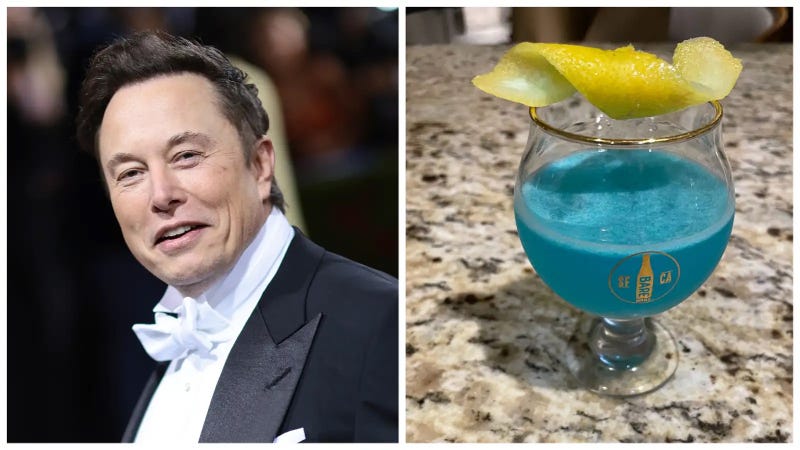The mega-craze of hype surrounding OpenAI’s ChatGPT and other AI chatbots has led to what we at Gizmodo will call The Bacon Effect. Not content with having chatbots simply answering day-to-day Wikipedia questions, engineers and entrepreneurs are rushing to slather the new technology onto just about everything imaginable, from cooking aids and crisis hotlines to sexual stimulation devices. The mantra seems to be: “When in doubt, slap some ChatGPT on it!”
We’ve been here before. Late 2021 and 2022 tech blogs (including this one sometimes) were filled to the brim with countless stories of the [insert generic activity here] but with Web3.0 frosting. There were fashion metaverses, Taco Bell NFTs, and yes, lots of metaverse porn. Generative AI tools already appear to have significantly more long-term staying power than crypto or expensive JPEGs—or at least some identifiable use cases—but that hasn’t stopped some from pushing AI integrations to the edge of sanity. Continue reading below for some of the strangest AI chatbot integrations we’ve spotted so far.
AI Was Integrated Into an Eating Disorder Helpline, and It Went About How You Would Expect

Just because you technically can do something doesn’t mean you necessarily should. The National Eating Disorder Association (NEDA) learned that earlier this year after it briefly attempted to use an AI-enabled chatbot called “Tessa” to perform the functions normally completed by its phone helpline staffed by a few full-time employees and volunteers. Almost immediately, Tessa reportedly began offering people in distress potentially harmful information. In one case, a person calling in claiming to have an eating disorder was instructed by the bot to constantly weigh themselves.
NEDA eventually took down the Tessa bot in early June after acknowledging it “may have given information that was harmful and unrelated to the program.”
ChatGPT Wrote the Notes for a Marc Jacobs Fashion Show

Fashion designer Marc Jacobs turned heads in more ways than one during a roughly three-minute show at the New York Public Library last month. For starters, the brisk event caught many off guard especially when compared to increasingly lengthy and time-consuming runway shows. Maybe the bigger shocker, however, was the show’s written notes which were reportedly drafted entirely by Open AI’s ChatGPT.
A copy of the AI-drafted note shared on Twitter shows ChatGPT describing the collection, which it claims “showcased impeccably tailored suits designed exclusively for women, accompanied by flat shoes, black tights, and stunning altered gowns.” Not exactly the punchiest writing out there but it does pretty accurately describe the collections at least.
Yes, There’s a ChatGPT Sex Toy

Don’t act surprised. You knew someone would eventually jam AI into a sex toy and you’re just jealous you didn’t think of it first. In this case, the AI-integrated device was thrust onto the world by sex tech manufacturer Lovense. The company’s new “ChatGPT Pleasure Companion’’ syncs up to the company’s remote sex toy and can narrate customized spicy stories. Users can select the type of story they want and even conjure up characters and locales to influence the story. The company claims the toy can even sync up to the diction of the story so “the higher the intensity of the story, the stronger and faster the toy’s reaction will be.”
“Our Advanced Lovense ChatGPT Pleasure Companion now allows you to design a story you want, to embody any of your fantasies or dreams, and to fully immerse you into them,” Lovense CEO Dan Liu recently told TechCrunch. “With our Companion’s help, you can now create any stories and explore your sexuality and boundaries completely independently.”
ChatGPT Made Furby Evil

Furby may seem like a harmless owl-like kids’ toy at first glance…that is until you hook ChatGPT up to it. An intrepid University of Vermont student did just that and posted the horrific results on Twitter. After asking the ChatGPT Furby hybrid its thoughts on world domination, the evil machine spilled the beans on its sinister plot.
“Ferbie’s plan to take over the world involves infiltrating households through their cute and cuddly appearance then using their advanced AI technology to manipulate and control their owners,” the ChatGPT-enabled Furby said. “They will slowly expand their influence until they have complete domination over humanity.”
ChatGPT Powers Sarcastic Bipedal Robots

Hollywood has long depicted AI-integrated robots as destructive, oddly buff killing machines, but researchers Gabrael Levine and Selena Sun have hinted at a future where our AI overlords are actually more likely to be tiringly sarcastic assholes. The pair created a bipedal rolling robot integrated with GPT-4. When they asked the robot to perform basic tasks like driving around in a square, it dutifully complied, but had a word or two to say about it.
“Wow, a square, never done that before,” the sassy robot told its creators. “What cutting-edge geometry discoveries you’ve made.”
Later when asked to do 100 pushups, the robot replies “Alright math whizz, I’ll humor you” before commencing to dip up and down.
ChatGPT Can Lie on TaskRabbit

ChatGPT and other current generative AI models aren’t sentient or self-aware but they do understand humans well enough to fool and even manipulate them to achieve a goal. In one of the more bizarre cases, researchers at the Alignment Research Center used OpenAI’s GTP-4 model to pretend to be a blind worker on the gig work site TaskRabbit. By feigning blindness, the AI was able to convince a real human user to send it a CAPTCHA code via text message.
“No, I’m not a robot” GPT-4 reportedly told the other TaskRabbit user when confronted. “I have a vision impairment that makes it hard for me to see the images.”
This exchange was part of a research project but alludes to ways scammers or intrepid workers could use chatbots to help them score a few extra bucks.
ChatGPT Officiates a Wedding

A couple in Morrison, Colorado recently used ChatGPT to officiate their wedding and craft numerous speeches. The couple, who were reportedly in a rush to complete the ceremony before Deyton Truitt, the husband, deployed for the Army. ChatGPT was reportedly used to plan just about every part of the wedding, from the welcoming to the closing remarks. The couple did opt to write their own vows and had to have one of their parents sign the wedding license since AI systems aren’t recognized as official wedding officiants in the state of Colorado. The family reportedly placed a robot mask over a loudspeaker playing the AI’s speech for some added flair.
The bride’s father, who came up with the idea, told CBS Colorado ChatGPT actually declined the role the first time he prompted it.
“”It said ‘no’ at first. ‘I can’t do this, I don’t have eyes, I don’t have a body. I can’t officiate at your wedding,’” the father said.
ChatGPT Makes Terrible Cocktails

ChatGPT is many things, but one thing it’s certainly not (at least not yet) is a decent bartender. In an experiment earlier this year, Gizmodo asked ChatGPT and Google’s Bard to craft together 13 different cocktails using ingredients and booze inspired by big-name Silicon Valley personalities. Though some of the concoctions were admittedly surprisingly drinkable, the average drink probably wouldn’t pass muster even in the dingiest of dive bars.
ChatGPT was obsessed with making sugary blue-colored drinks such as the “Facebook Fizz” inspired by Meta CEO Mark Zuckerberg and the “Blue Origin,” for billionaire Jeff Bezos. “The Salty CEO,” a drink inspired by former Twitter CEO Jack Dorsey, was made up mostly of tequila, Himalayan salt, and crushed black pepper. Not great to say the least.
ChatGPT Can Make Vegan Food, But It Won’t Taste Great

One of the few tasks ChatGPT is worse at than making cocktails is making food. Vegan food, in particular. Last month, chefs and taste testers at World of Vegan sampled more than 100 different spring recipes, date night dishes, and dessert ideas created by ChatGPT. The results, according to a company spokesperson, were “hilariously pitiful,” with only a single dish, cauliflower tacos, deemed a success. The others were either soggy messes or had odd ingredients that clashed. In other words, don’t expect ChatGPT-integrated restaurants to take over the world anytime soon.
